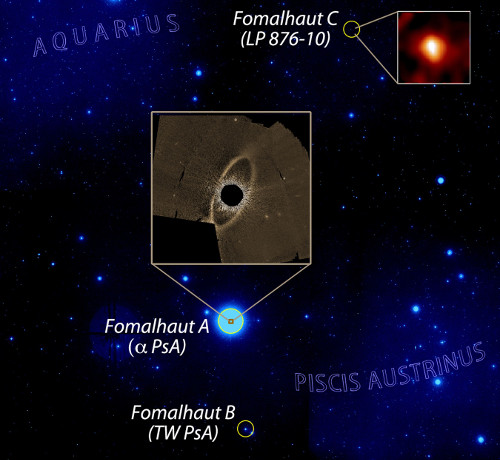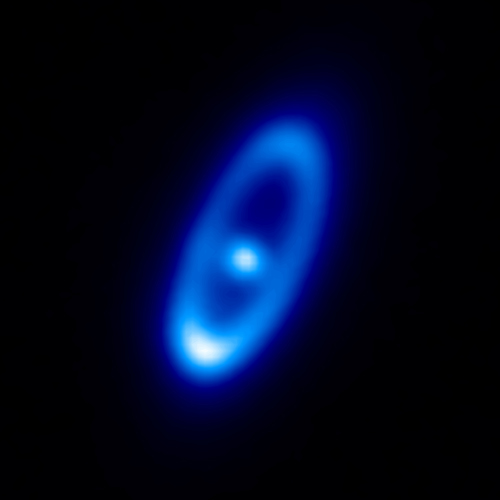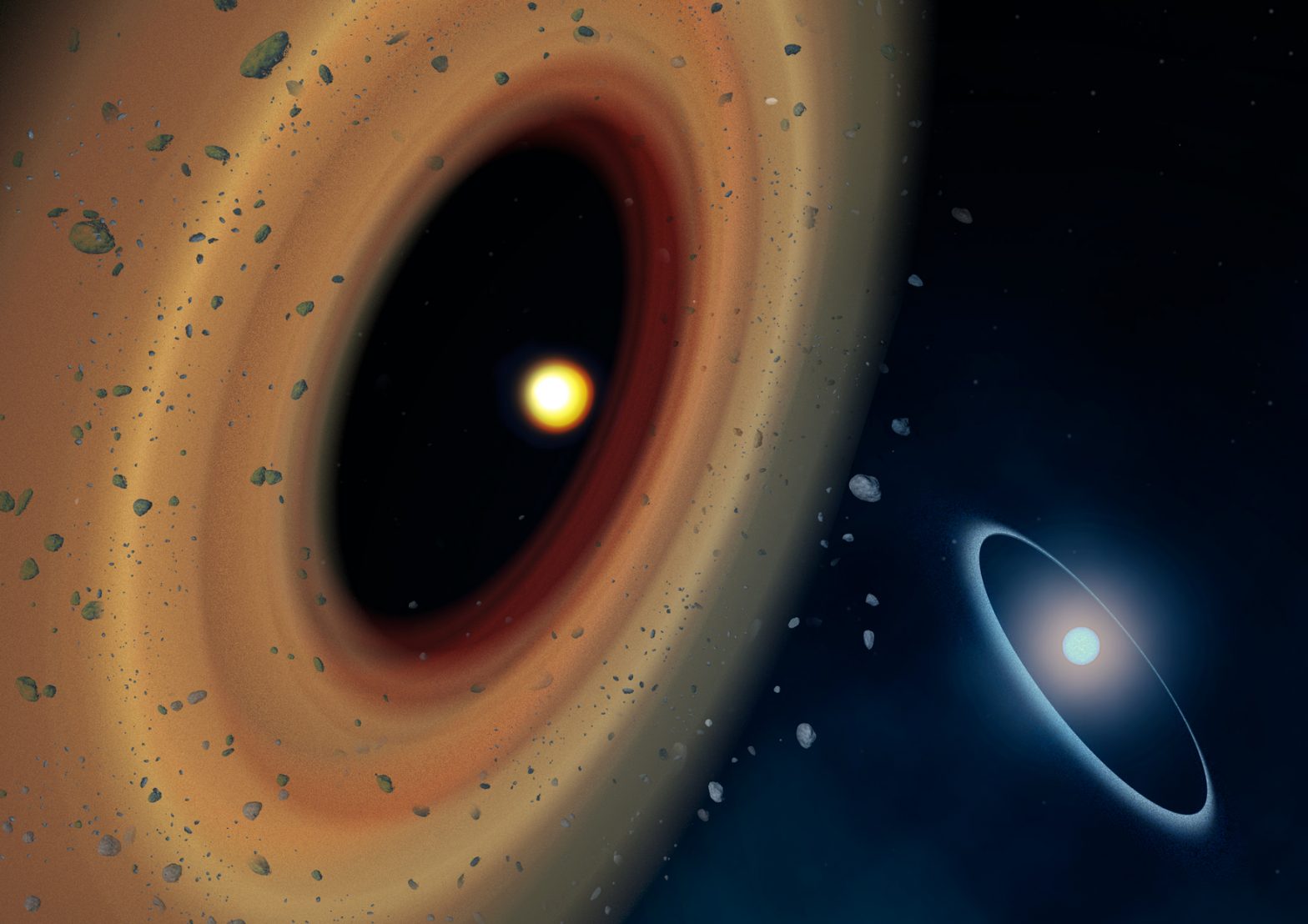| Basic Information | |
| What is this? | An artist’s impression of the belt of comets around the star Fomalhaut C, with Fomalhaut A in the background |
| Where is it in the sky? | In the constellation of Piscis Australis |
| How big is it? | The ring of comets is at least 3 billion km across |
| How far away is it? | The stars lie around 25 light years away |
| What do the colours represent? | Fomalhaut C is a small, red dwarf star, while Fomalhaut A is a brighter, bluer star more like our Sun |
Downloads
See this object in:

The nearby star Fomalhaut A hosts the most famous planetary system outside our own Solar System, containing both an exoplanet and a spectacular ring of comets. An international team of astronomers have now announced a new discovery with the Herschel Space Observatory that has made this system even more intriguing; the least massive star of the three in the Fomalhaut system, a red dwarf star called Fomalhaut C, has now been found to host its own comet belt.
The new discovery might hold the key to some of the mysteries of the Fomalhaut system. Grant Kennedy, from the University of Cambridge and lead author of this study, said, “It’s very rare to find two comet belts in one system, and with the two stars 2.5 light years apart this is one of the most widely separated star systems we know of. It made us wonder why both Fomalhaut A and C have comet belts, and whether the belts are related in some way.” To get a feeling for how far 2.5 light years is, the nearest star to the Sun, Proxima Centauri, is only 4 light years away.
This discovery may help solve the major mystery in the Fomalhaut system: the orbits of the comet ring and planet around Fomalhaut A are not circular, but elliptical. The elliptical orbits are thought to be the result of close encounters with something else in the system, perhaps with another as yet undetected planet or perhaps with one of the two other stars, B or C. The discovery of the comet belt around C is important because such encounters can not only make the comet belts elliptical, they can also make them brighter by causing the comets to collide more often, releasing massive amounts of dust and ice. Stars are rarely seen to have such bright comet belts, so their detection around both A and C suggests that they may have had their brightnesses enhanced by a previous close encounter between the two.
Paul Kalas of the University of California discovered the orbits are elliptical and is involved in the new work. He said, “We thought that the Fomalhaut A system was disturbed by a planet on the inside – but now it looks like a small star from the outside could also influence the system. A good test of this hypothesis is to measure the red dwarf’s exact orbit over the next few years.”

The stellar interaction scenario isn’t as unusual as it sounds. Comet ISON, which disintegrated following a close encounter with our Sun at the end of November, may have been put on a Sun-grazing orbit by a star that passed near to the Solar System in the past. Similarly, the proposed encounters between the stars in the Fomalhaut system may have sent a few comets onto star-grazing orbits. You might imagine that if there were any habitable planets around Fomalhaut A or C, their inhabitants might be luckier than us and see truly spectacular comet shows in their night sky.
Although Herschel finished observing in April 2013, seven months before Fomalhaut C was identified as part of the triple star system, but fortunately the telescope had imaged it back in 2011, so the astronomers have plenty of data on it already.
Kennedy has actually known about the comet belt for several years; “Over the last few years we used Herschel to look for comet belts around many stars within a few hundred light years of the Sun. At that stage Fomalhaut C was just called LP 876-10 and we thought it was a lone red dwarf with a comet belt. It was interesting because such discoveries are very rare, but didn’t tell us why it was there. After the discovery that this star was part of the Fomalhaut system, the existence of its comet belt made us think harder about connections between the two stars, and it may be that it helps solve the mystery of the elliptical comet belt around Fomalhaut A.”
Kennedy and his team are now trying to check the stellar encounter idea with computer simulations and more detailed observations of the Fomalhaut C belt. The apparent absence of a belt around Fomalhaut B remains a mystery. But if the simulations are in line with what the astronomers see, then this would be a ‘smoking gun’ for a stellar interaction and proof that other stars can affect how planetary systems form and evolve.


Comments are closed.